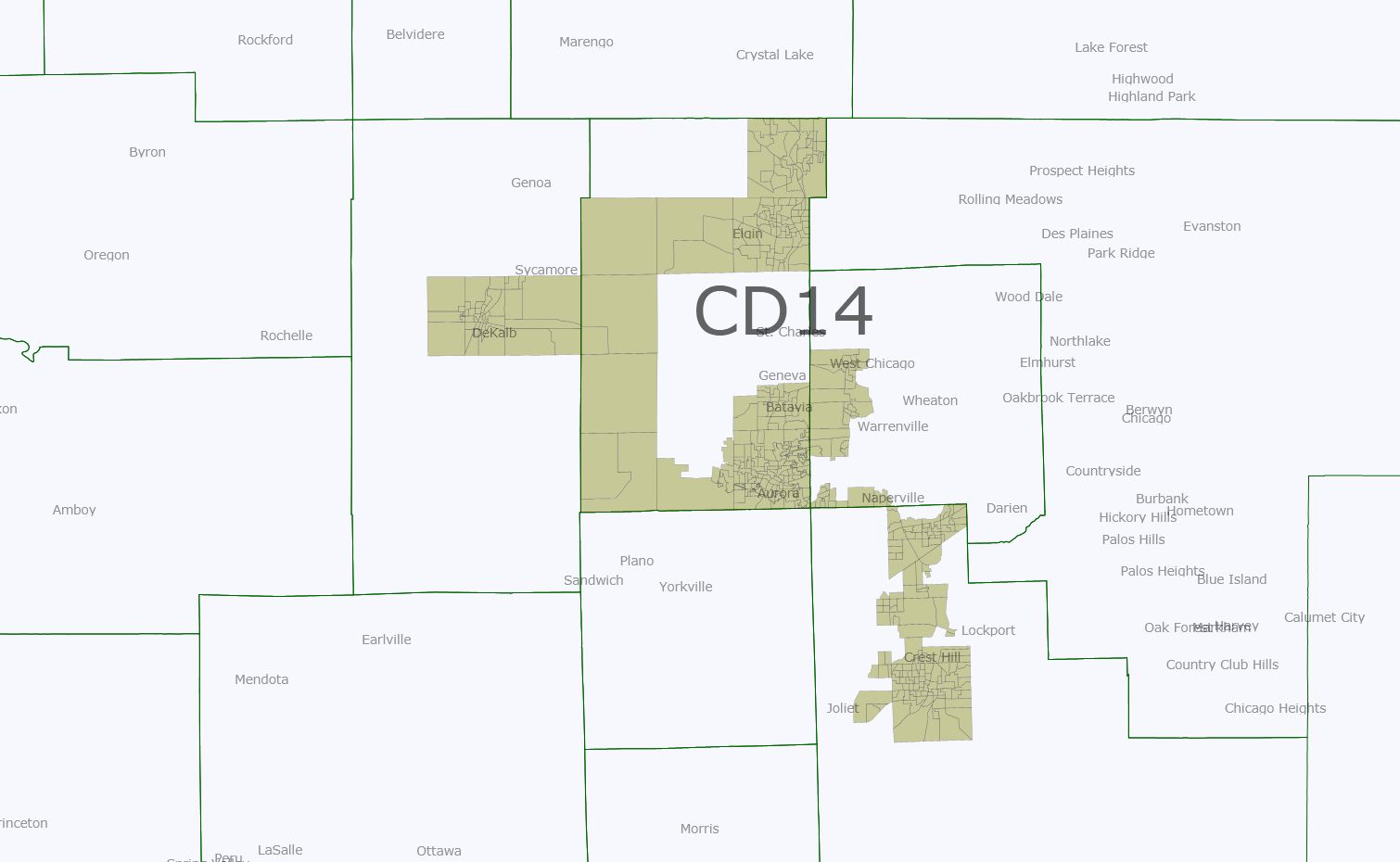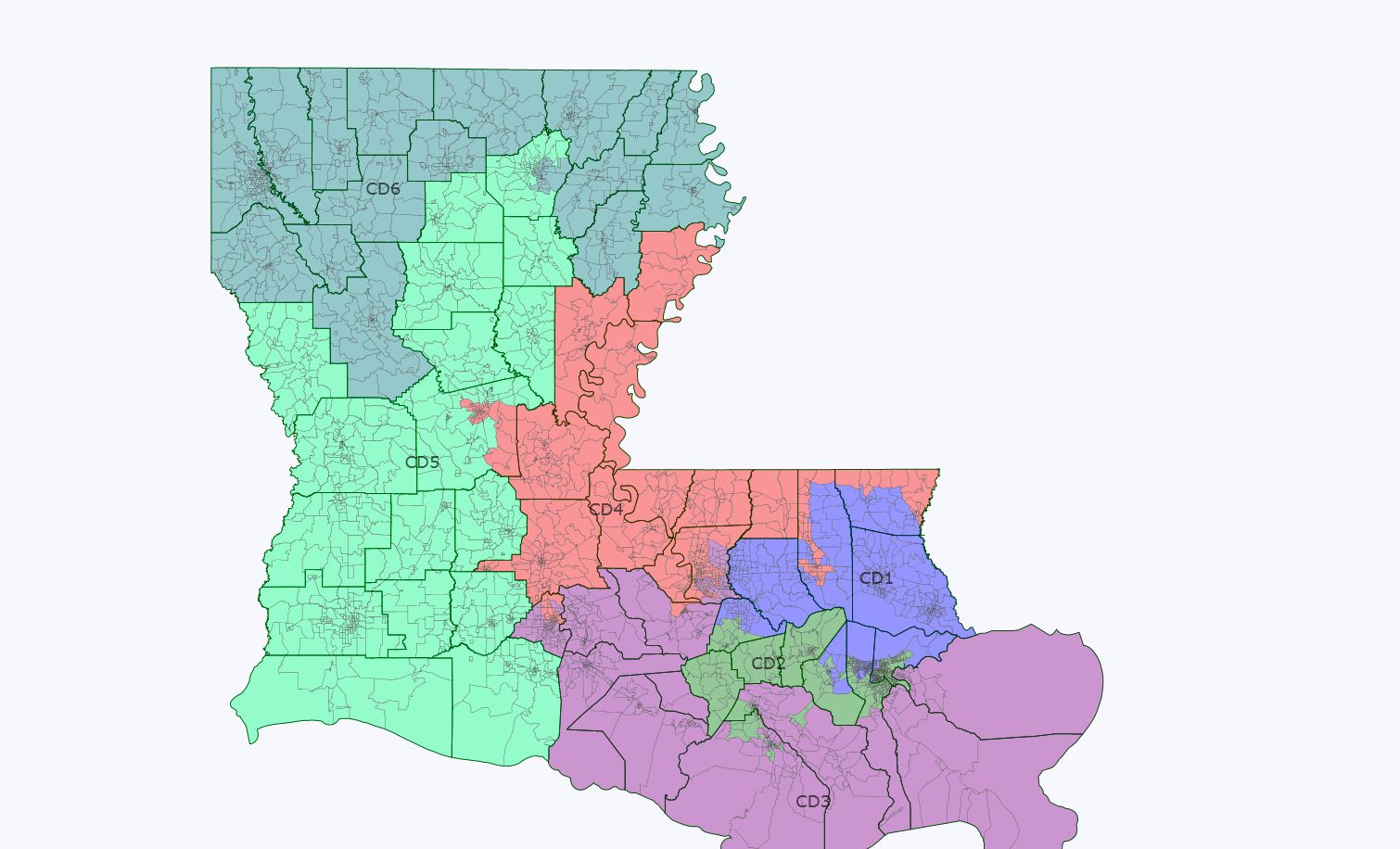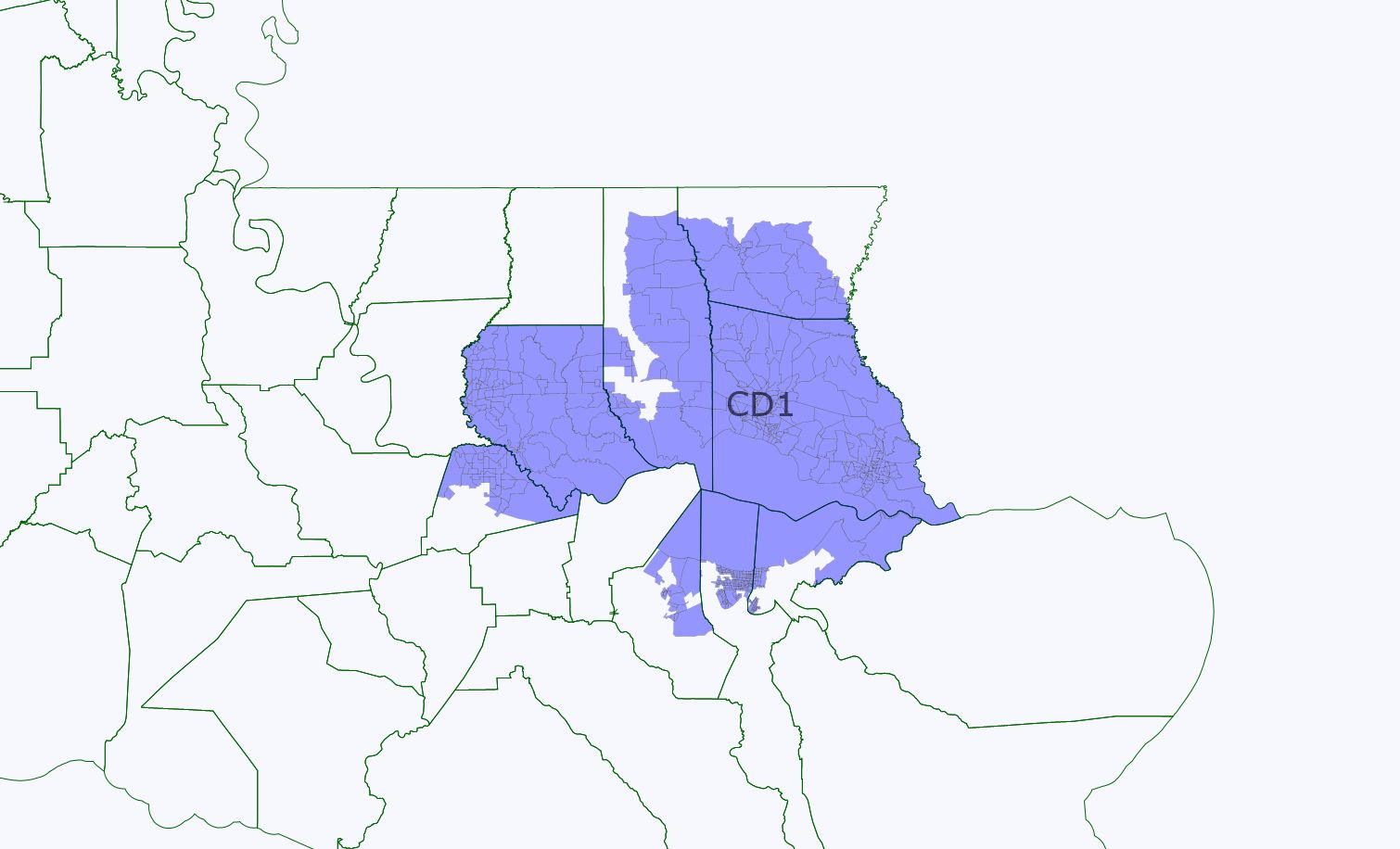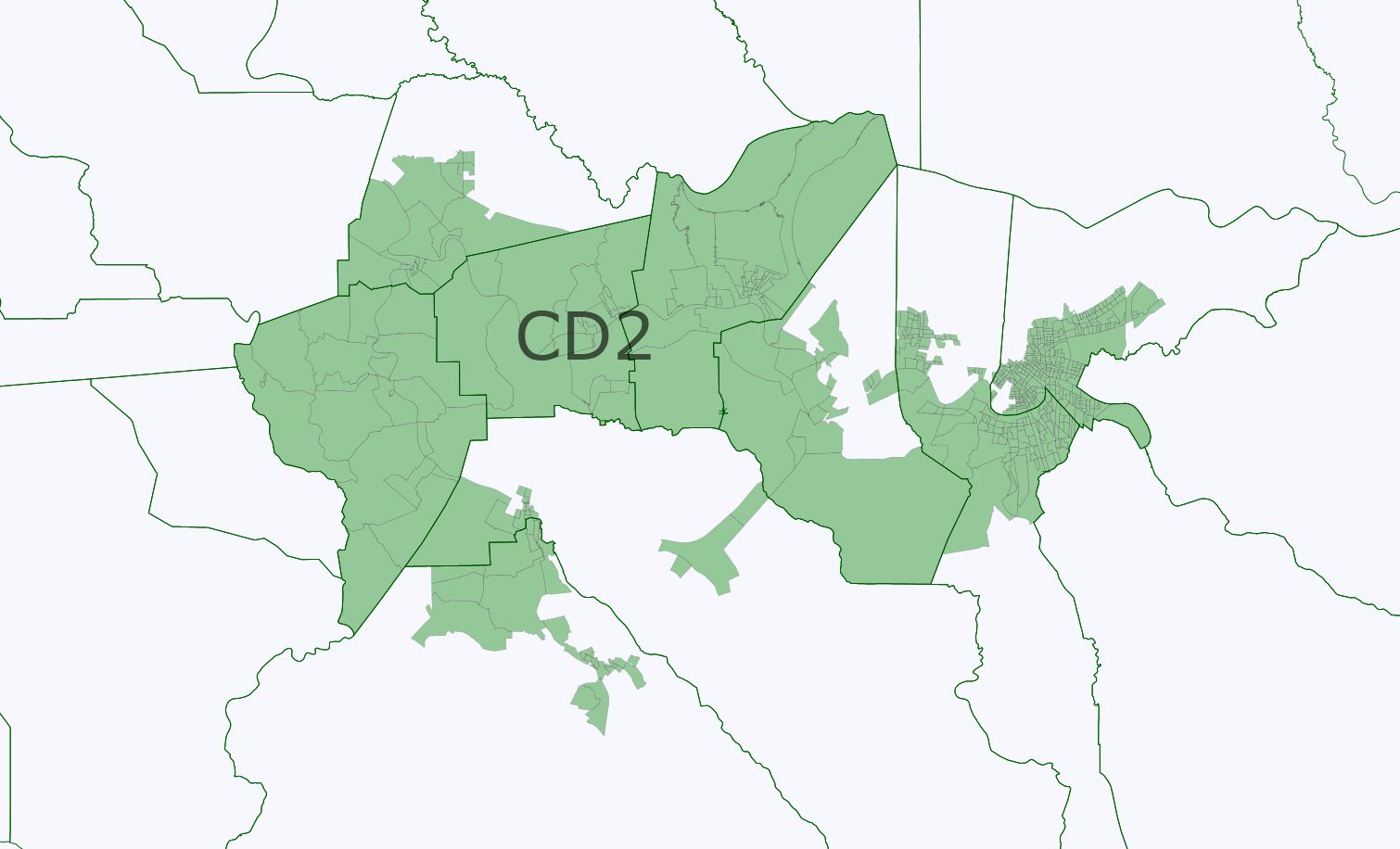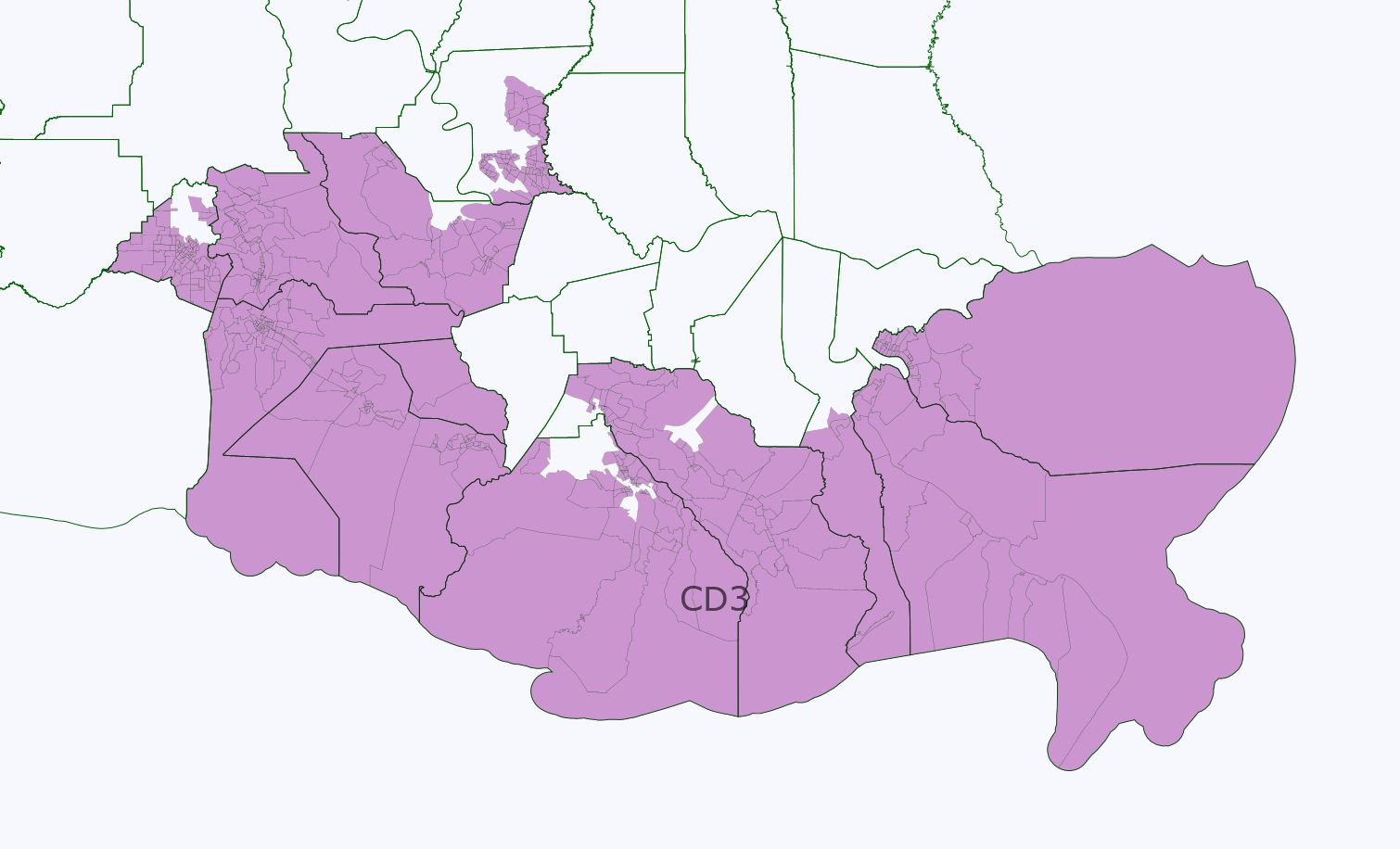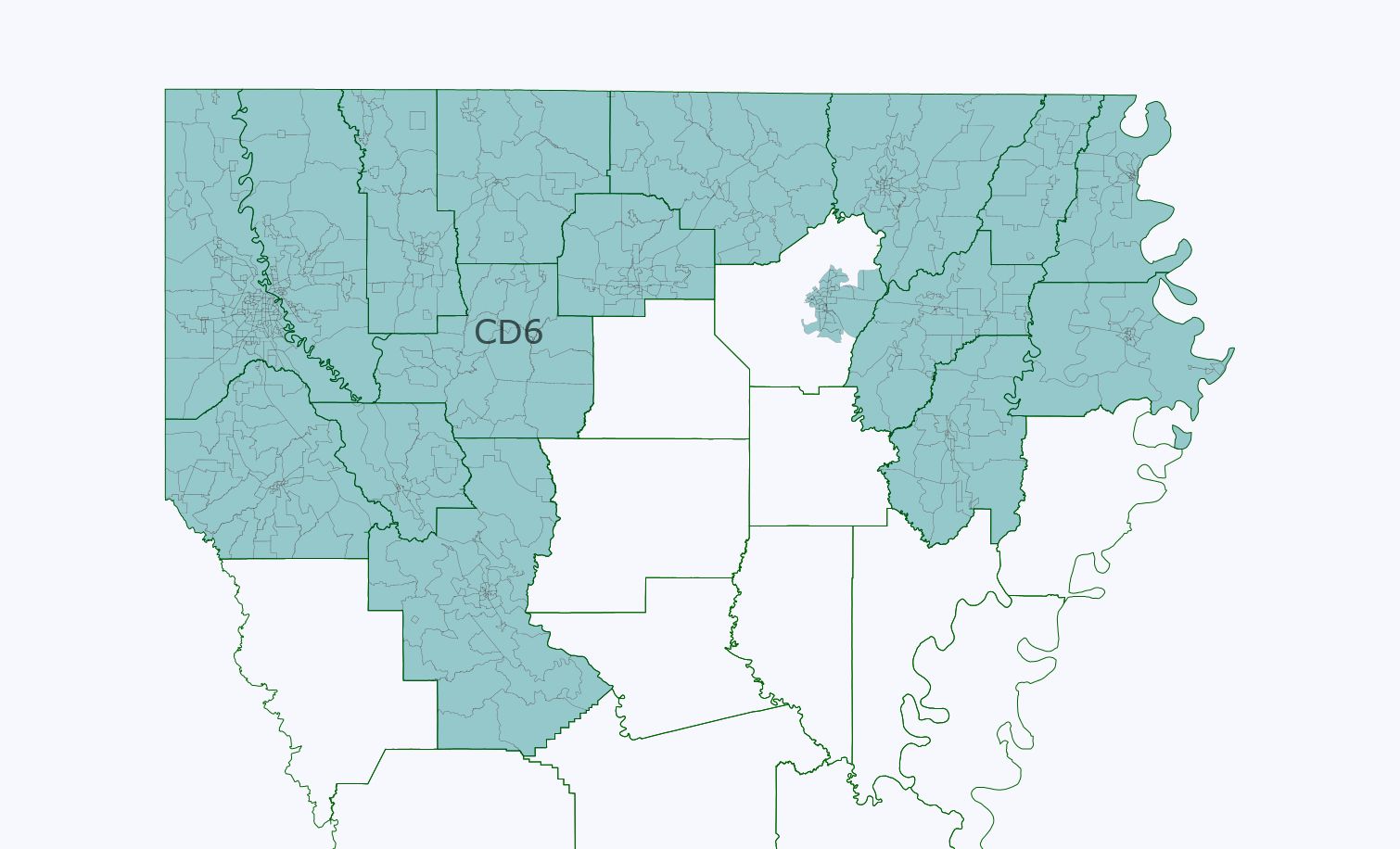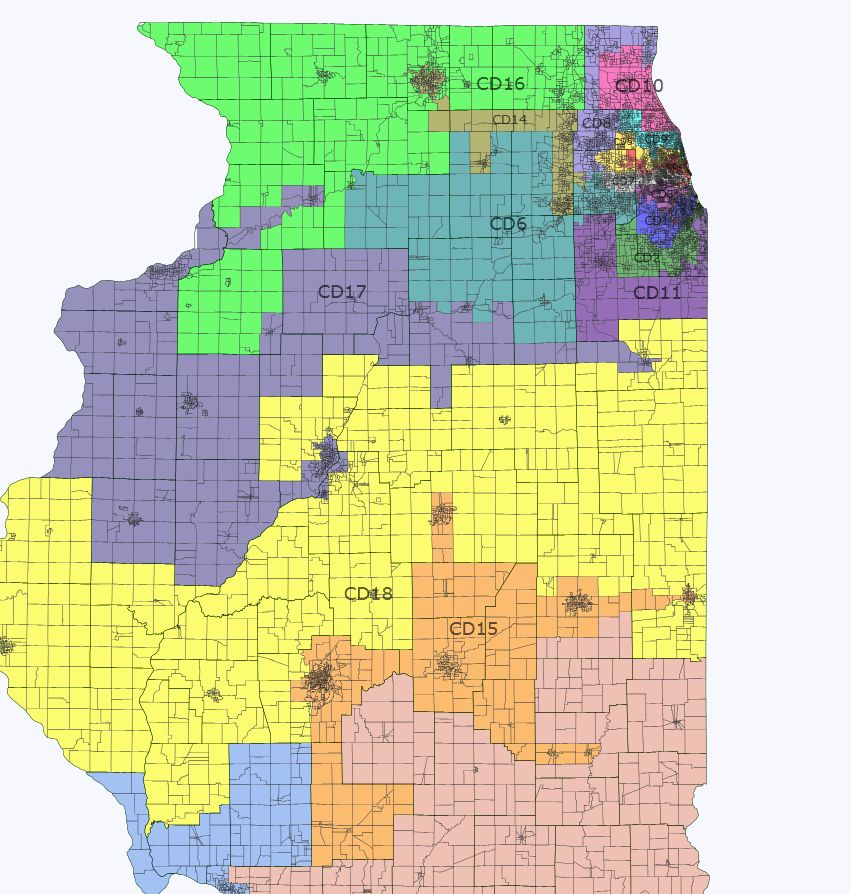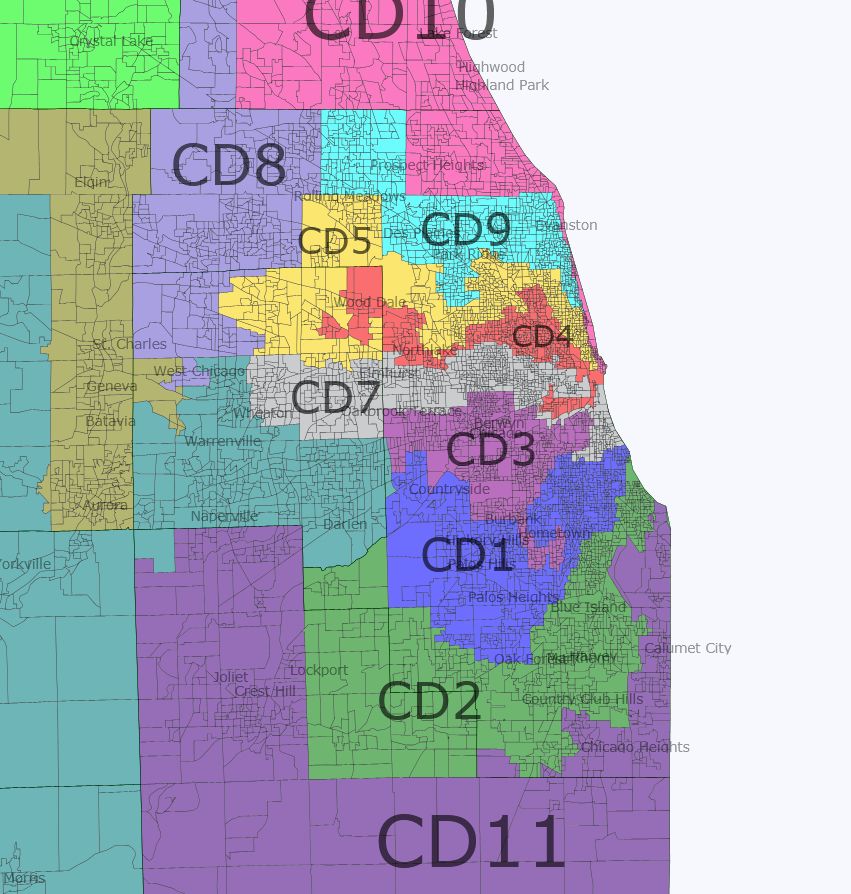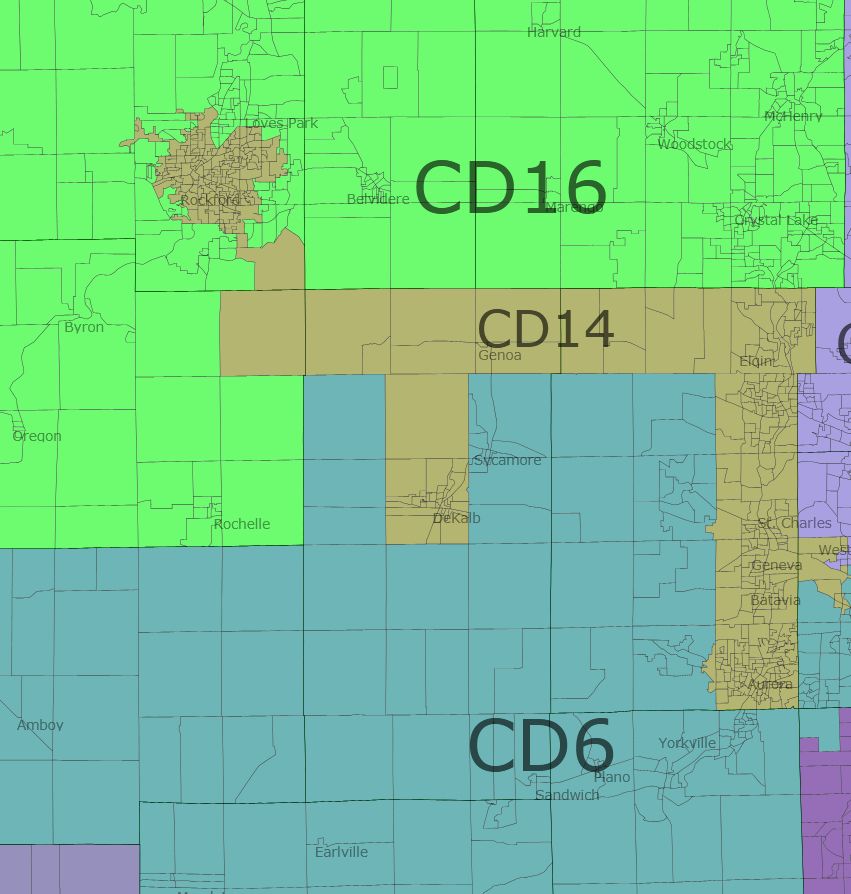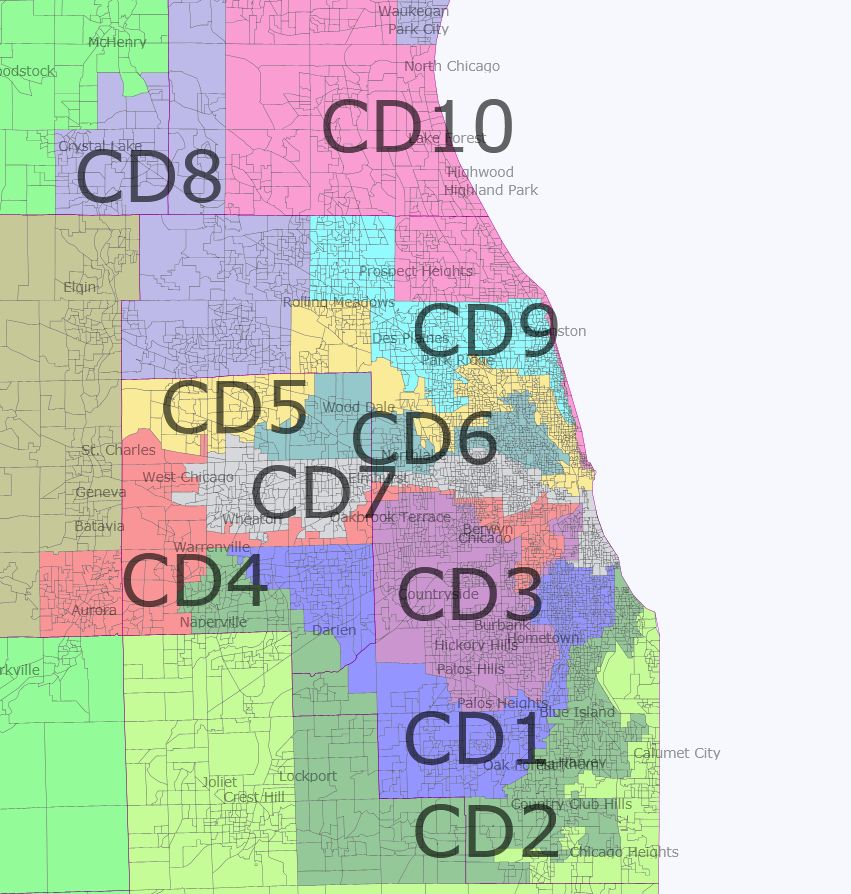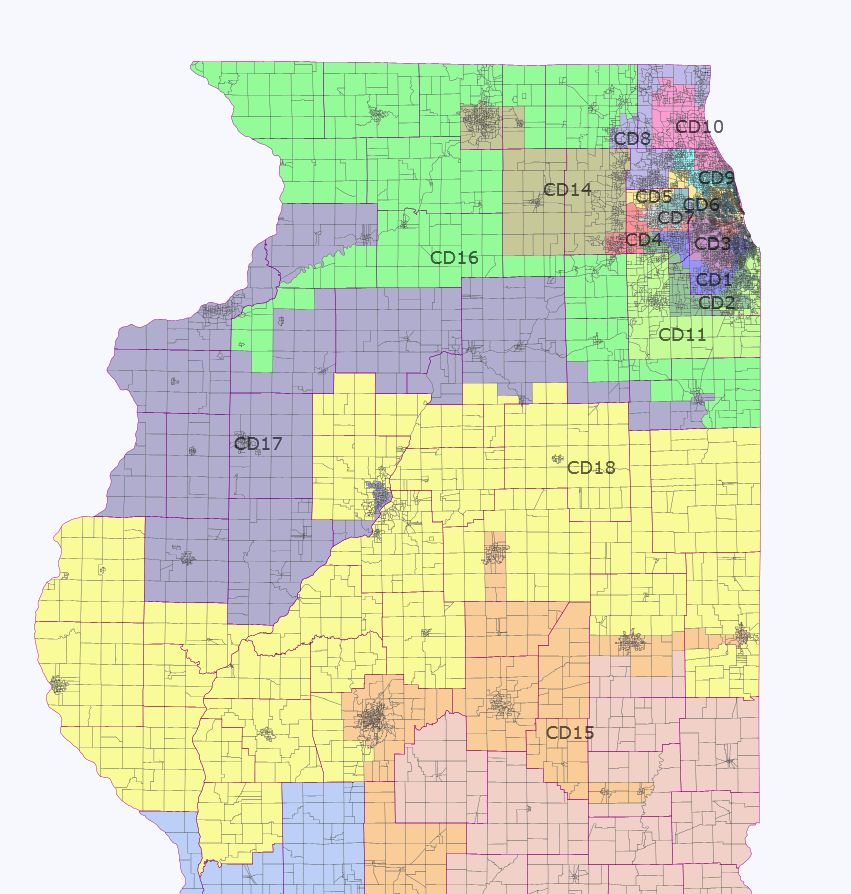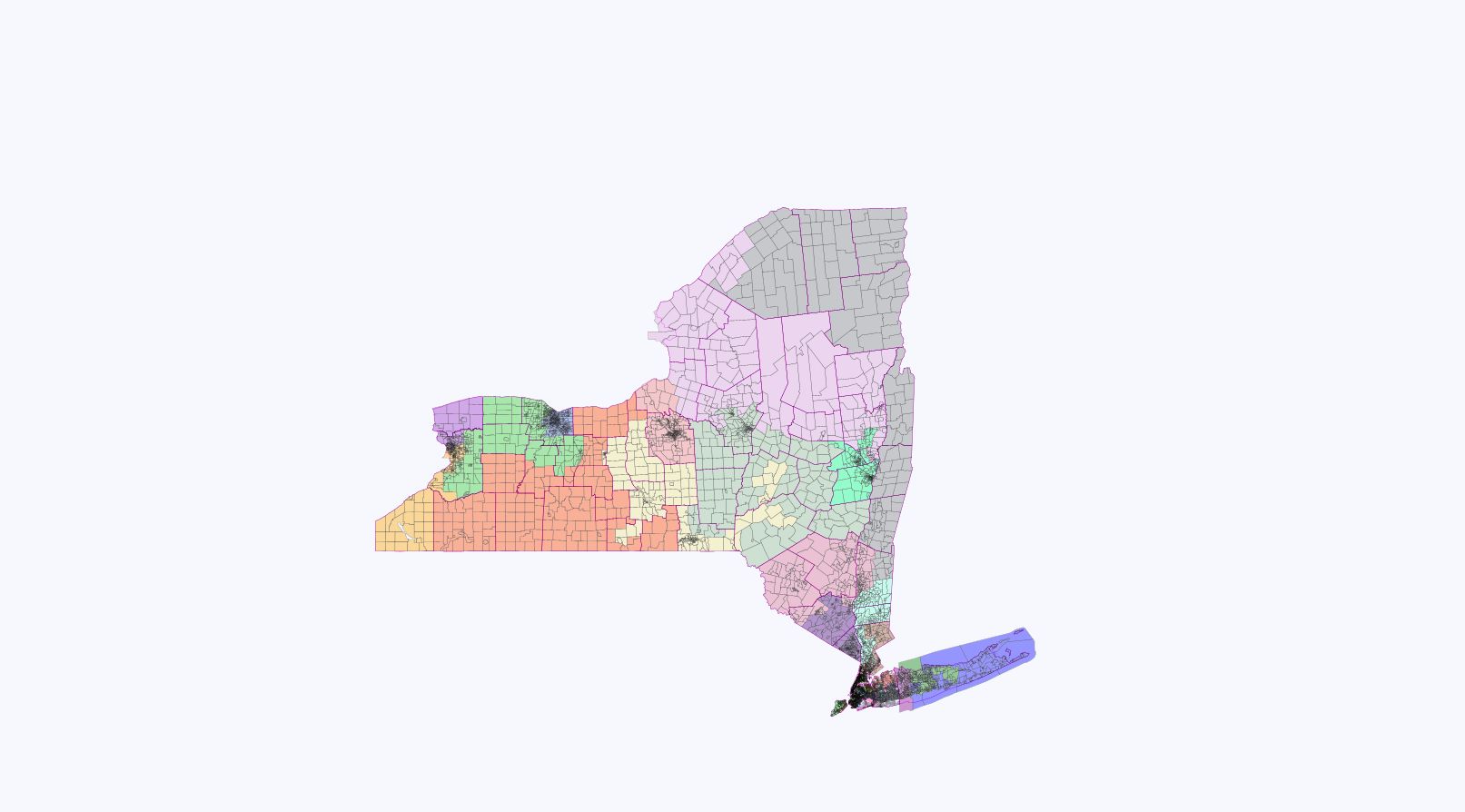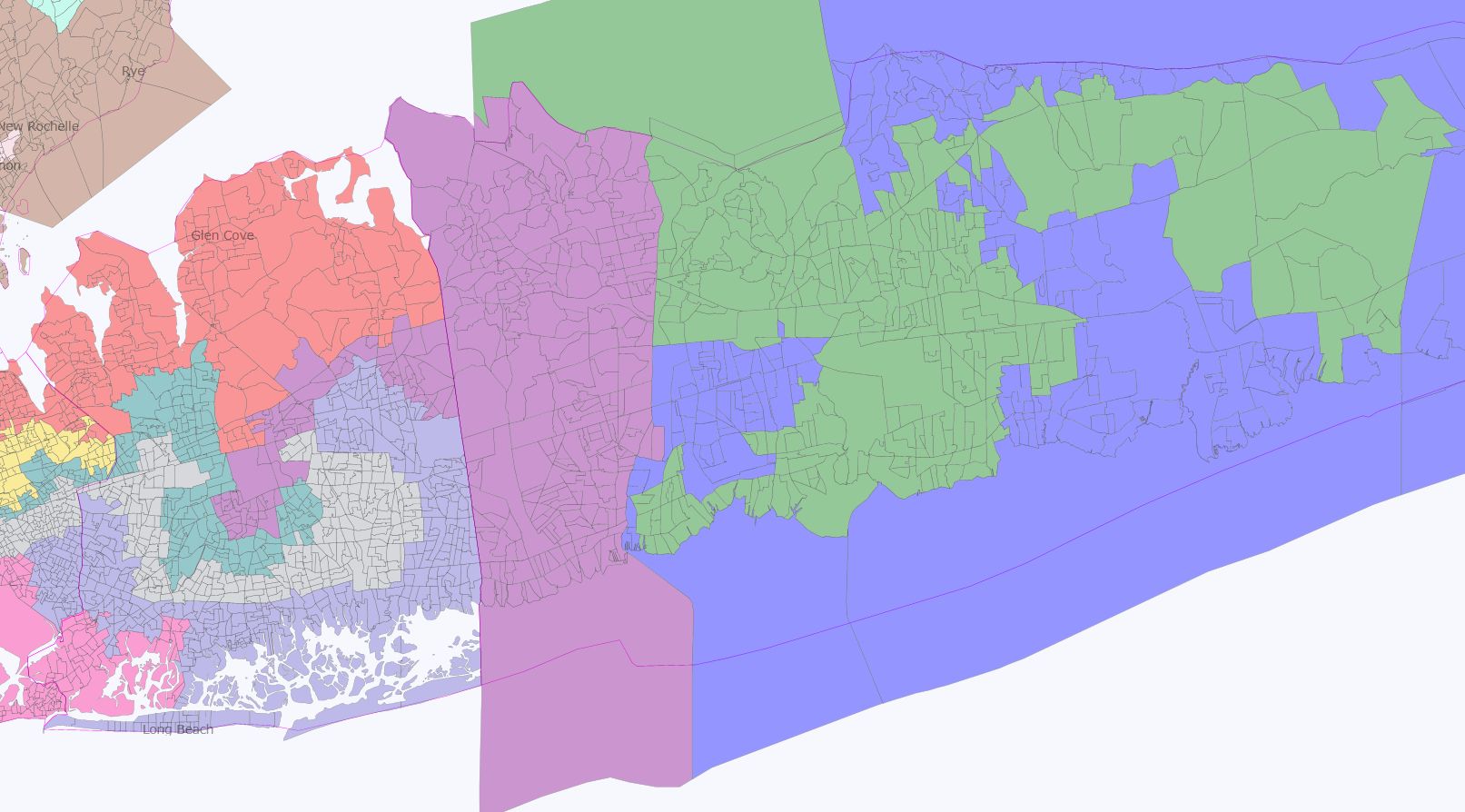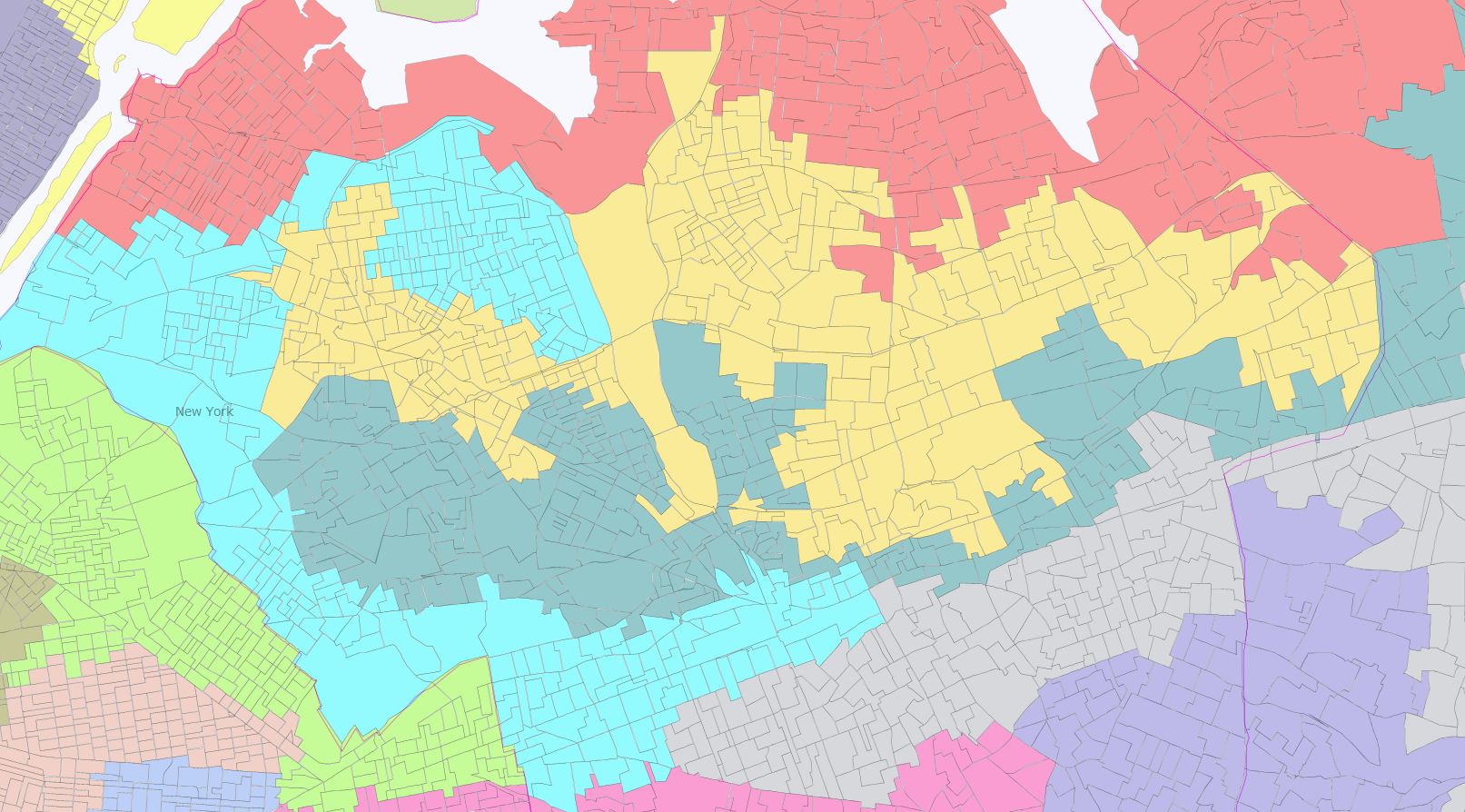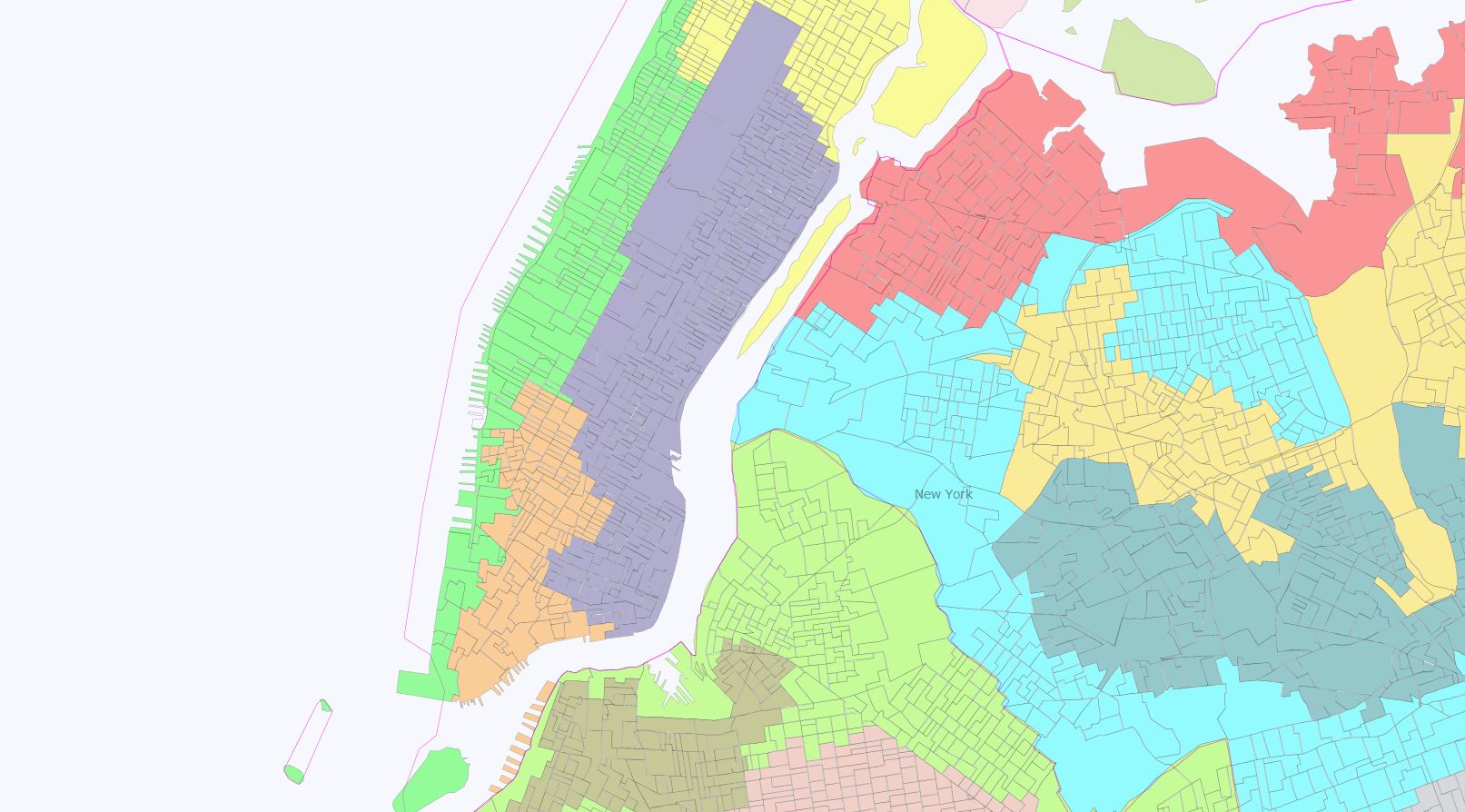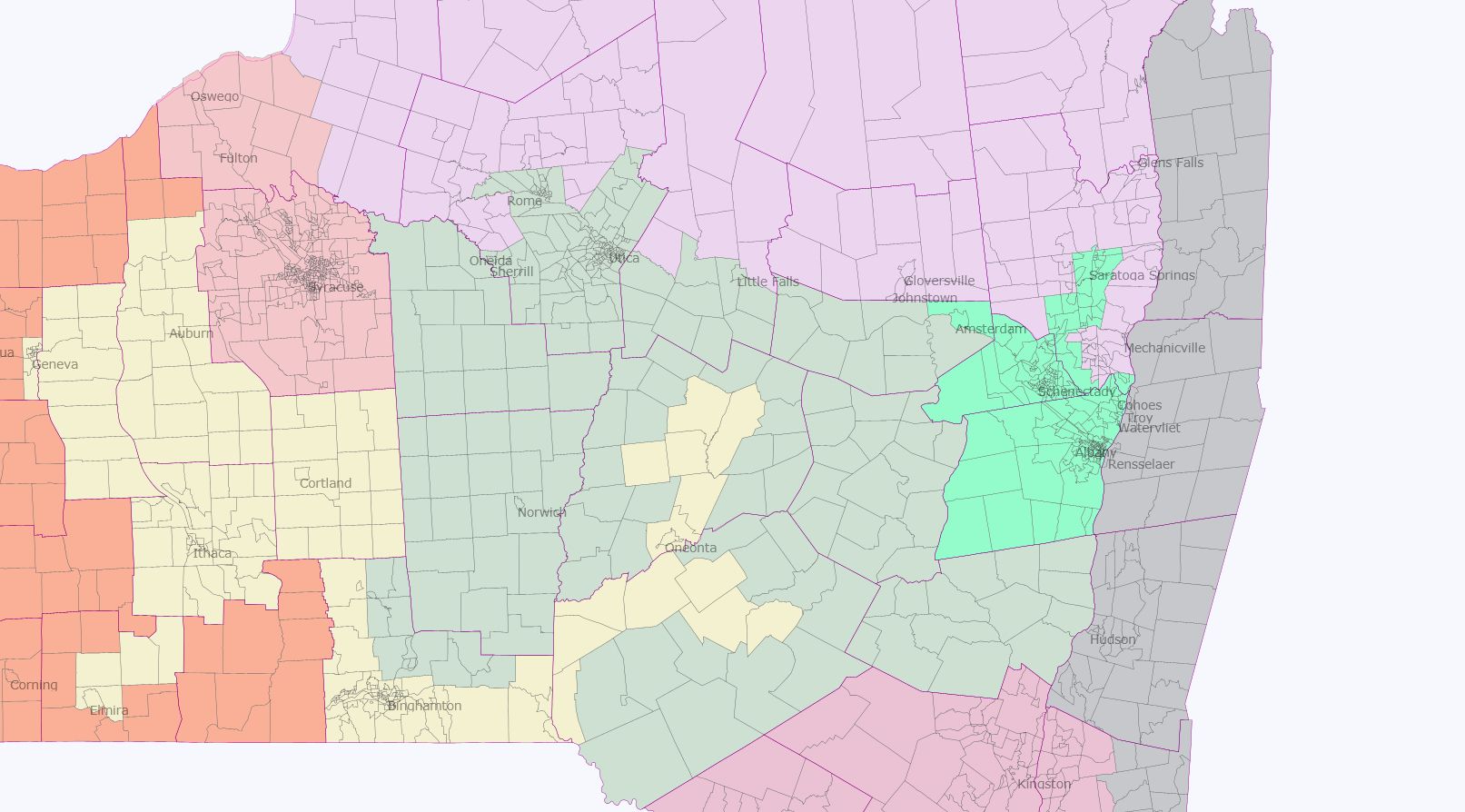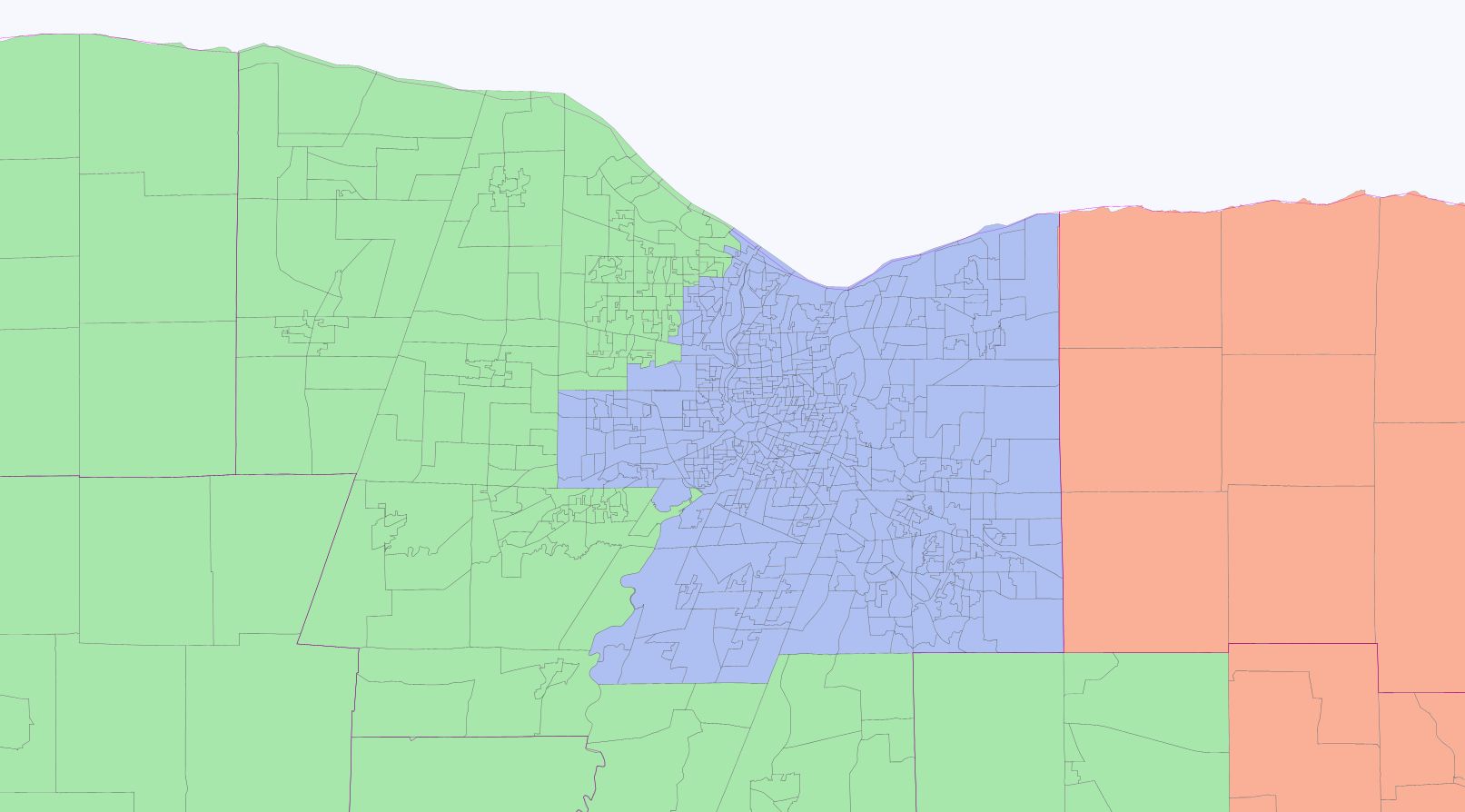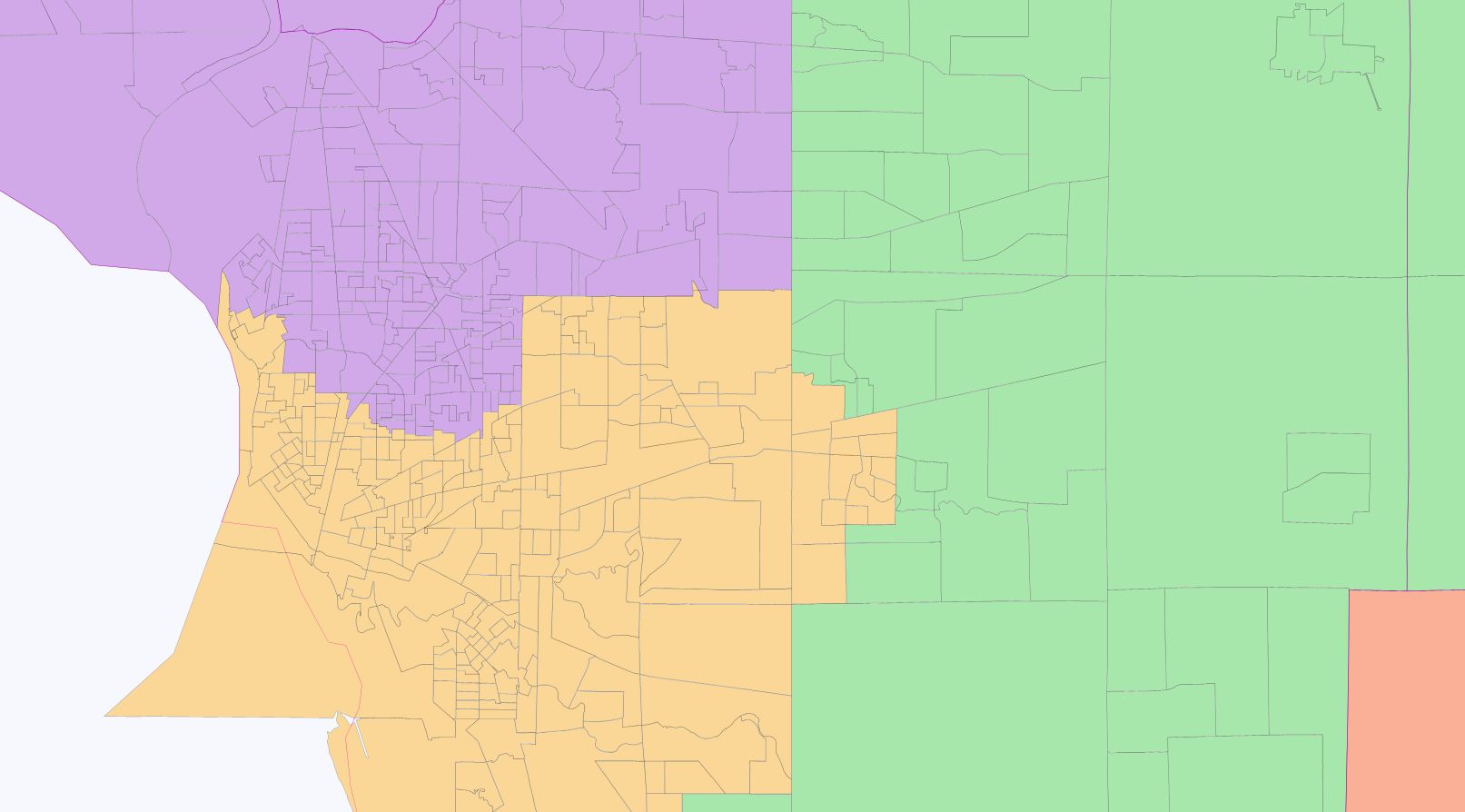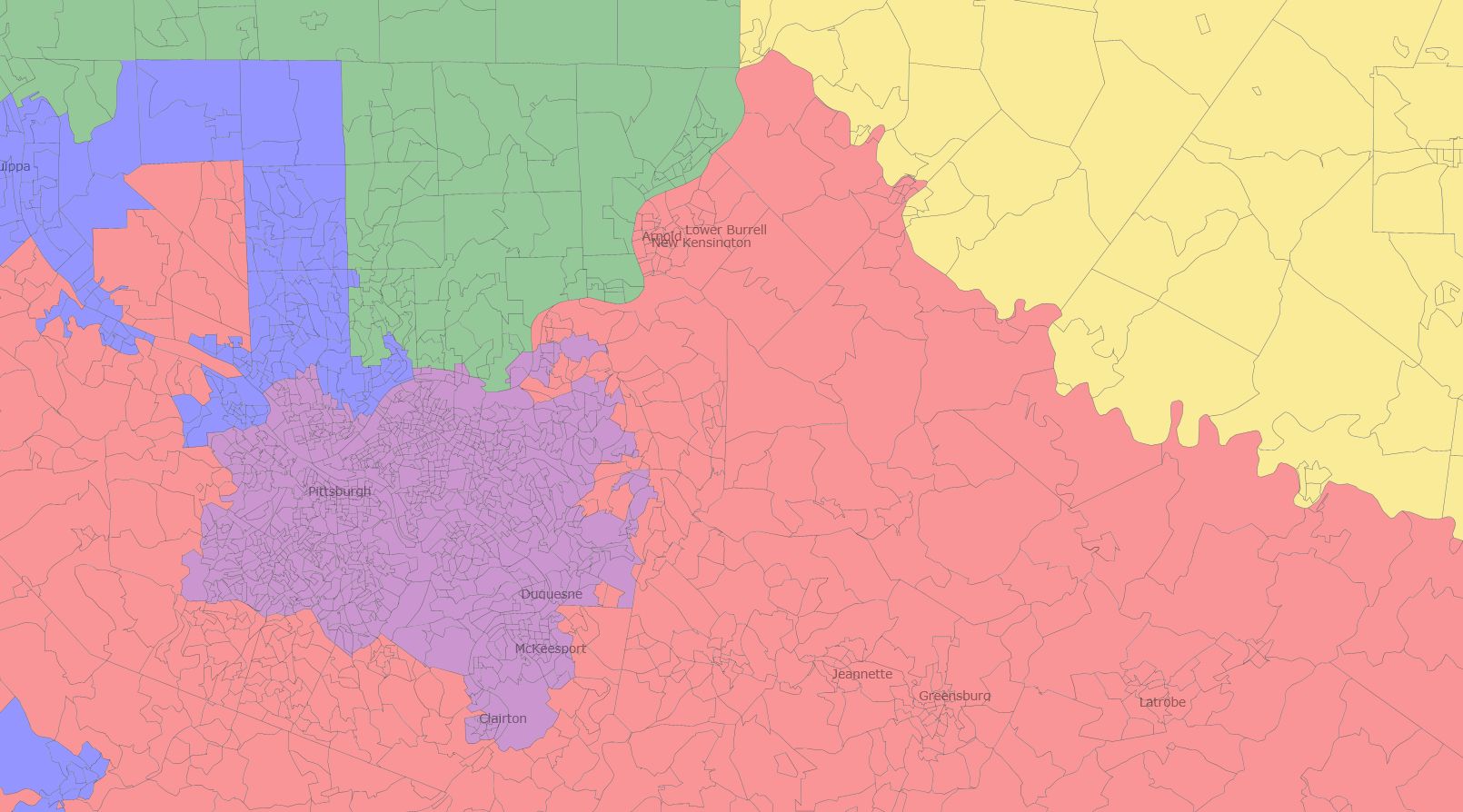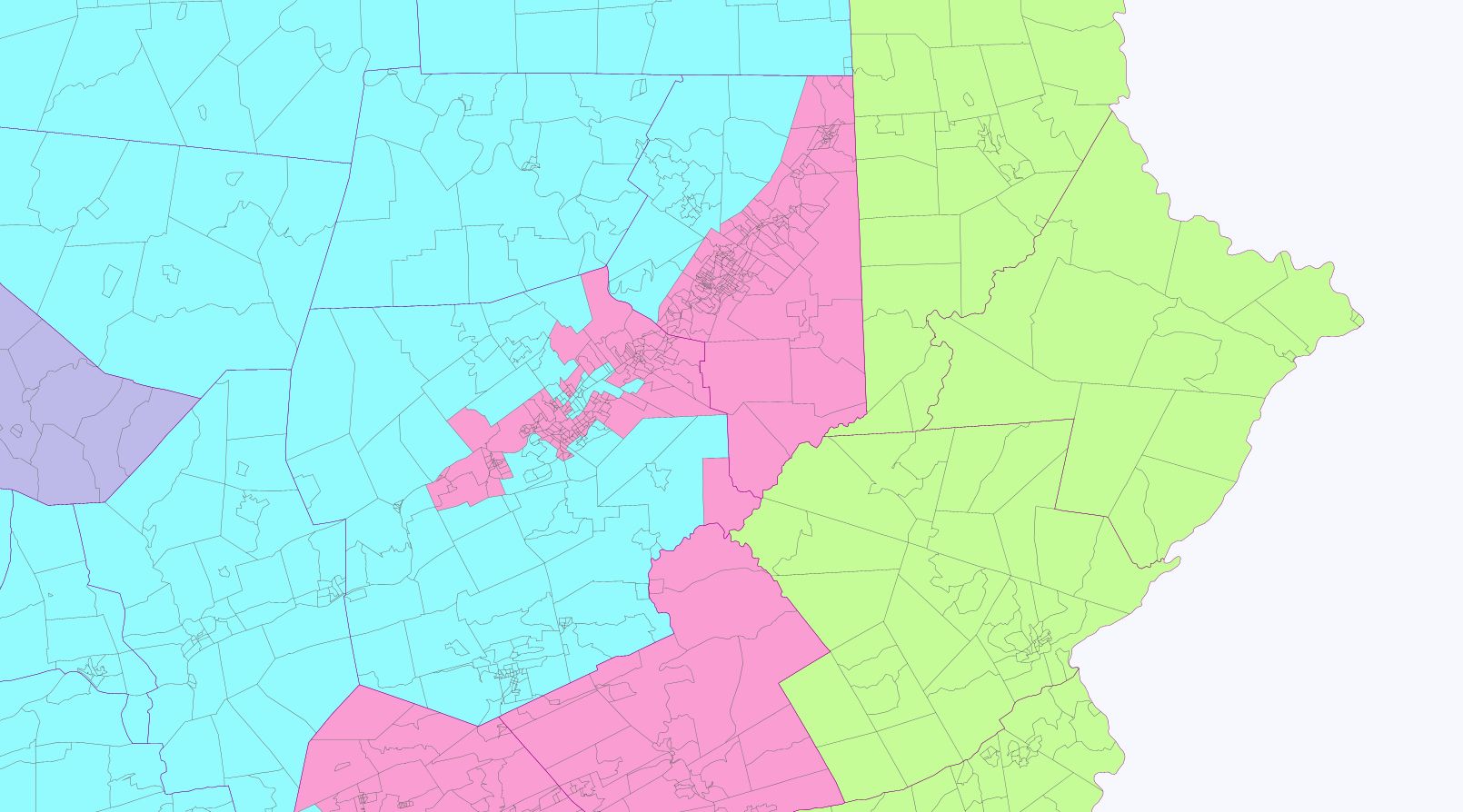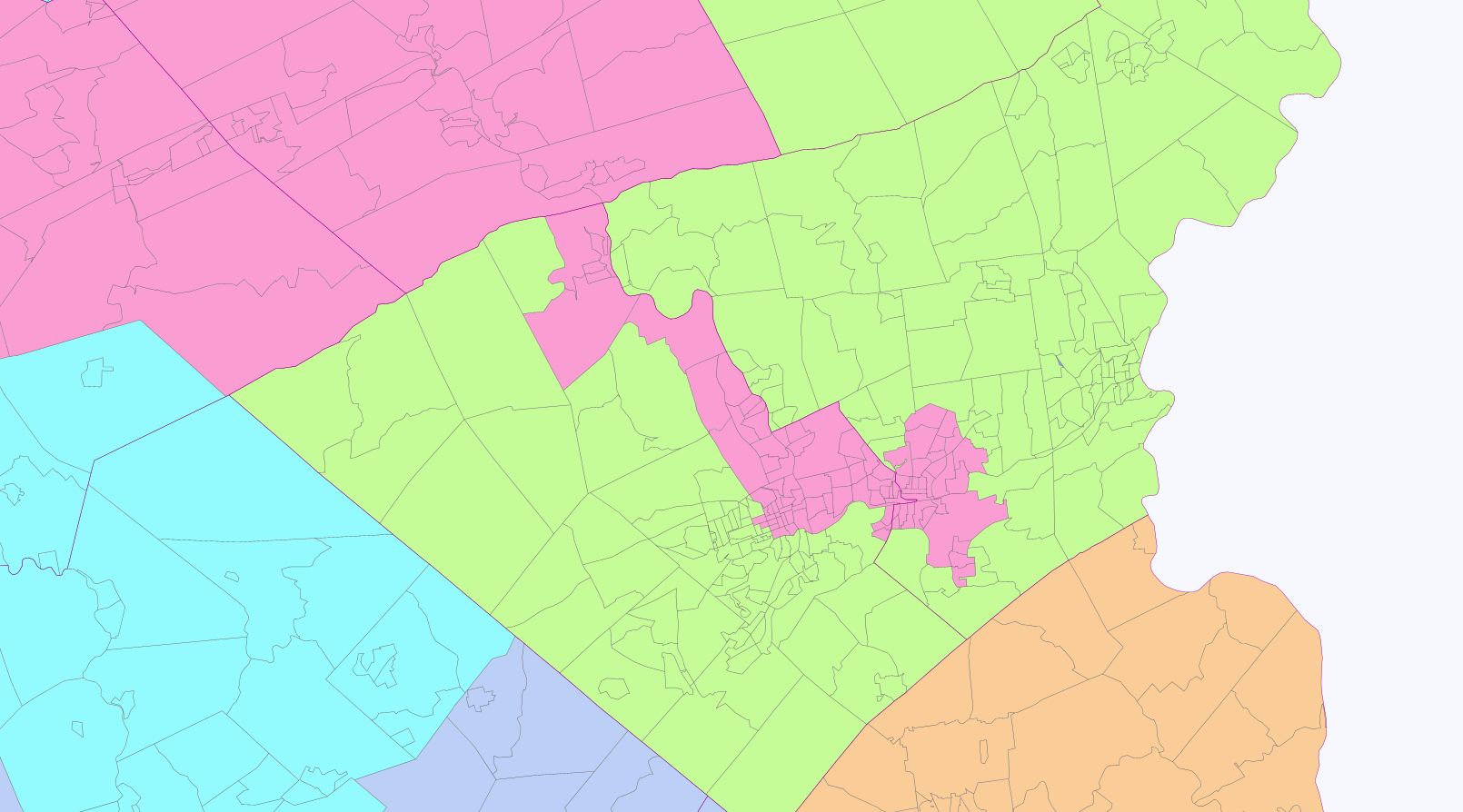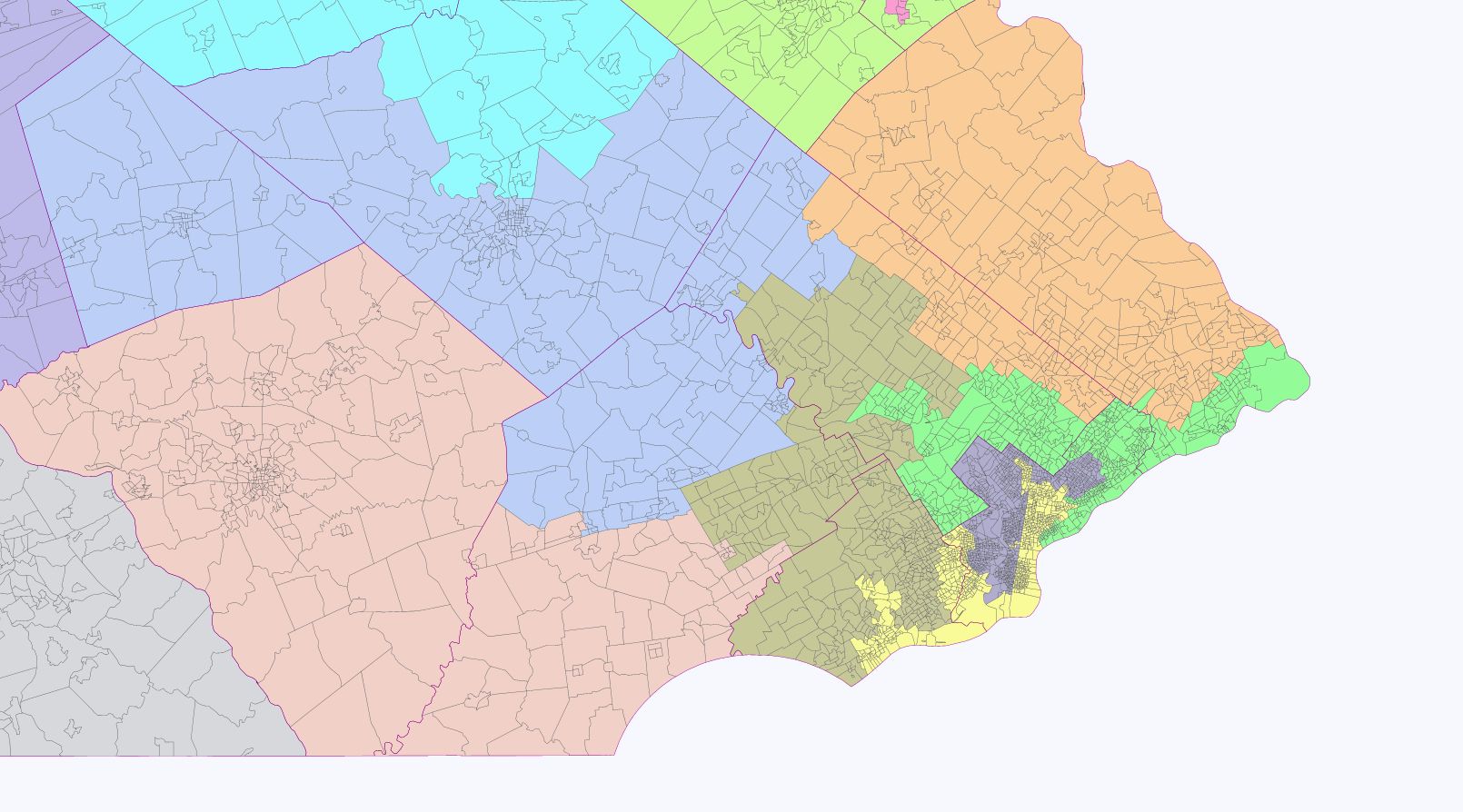Continuing the thought experiment about what 2010 redistricting look might like under the “Wyoming Rule,” I give you Texas. The mid-cycle Delaymander, together with the freak elections of Farenthold and (slightly less shocking) Canseco, several incumbents in the Dallas and Houston areas that are seeing their once solid districts become purplish (think Culberson and Sessions), means that likely the GOP is going to play tactical defense with redistricting this time around. But the nice thing with adding 14 new districts (versus 3-4 in actual reality) under the Wyoming Rule is the GOP is able, in addition to protecting each and every one of its incumbents, to create several open GOP seats throughout the state.
The second thing I wanted to know what how exactly the VRA might place a monkey wrench in efforts to expand the GOP congressional delegation in Texas. We know in reality, with a likely 35 or 36 seats after 2010, 2-3 of those will be new VRA seats (probably a new Hispanic district each in the Dallas-Forth Worth and Houston areas), plus perhaps a new Hispanic district in South/West Texas. But, interestingly, under Wyoming-sized districts, even though there are more VRA districts, the GOP is still able under this map to gain 9 out of the 14 new districts (and that includes one VRA Hispanic district in West Texas that voted 55% for McCain!) It turns out that the VRA will not prevent the GOP from locking down a likely 32-14 split in Texas’ congressional delegation under the Wyoming Rule. Follow me below the jump for maps and a fuller explanation.

Now were this New York, they would sensibly label the districts in a coherent way, but this is crazy Texas which means having districts jumping all over the place! But because I wanted to know where the new districts were going to be, I kept the numbers all the same and added in the new districts. Since Texas is several states all onto one, I will divide my discussion here by region, starting with Dallas-Forth Worth.
Dallas-Fort Worth Metro Area
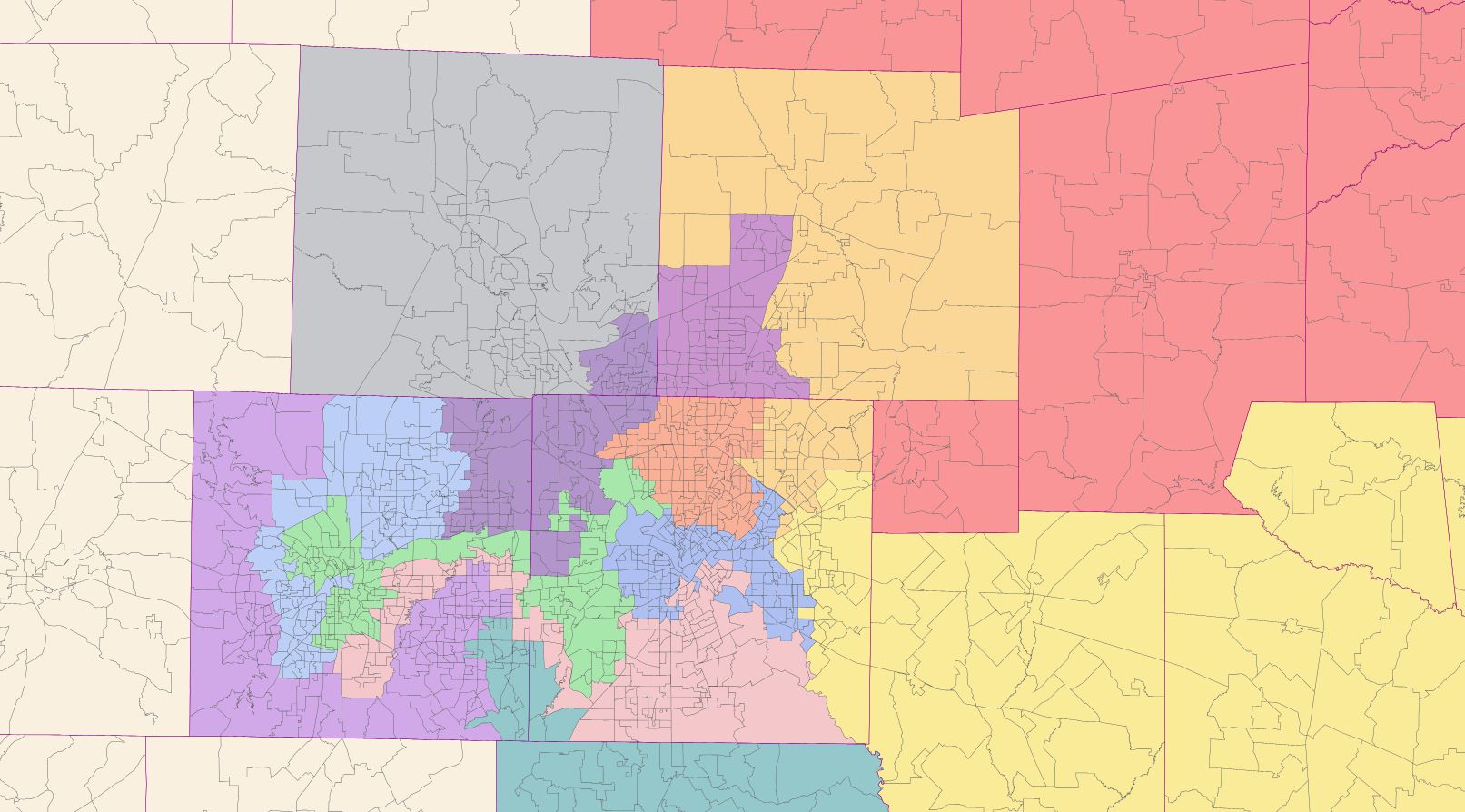
The map in the Dallas-Forth Worth area sees several major changes. First of all, the VRA would require the creation of not one but two new Hispanic districts while turning Johnson’s 30th, which is currently a fusion minority-majority district, into a Black majority district. But because all the Democratic votes get vacuumed up in three as opposed to one district, as is currently the case, the remaining two open seats created in the region are heavily favored to elect Republicans and all currently existing GOP incumbents are given safe districts.
District 3 (light purple) Johnson (R)
Obama 39, McCain 60
This district divides almost neatly into two given its explosive population growth and the smaller districts under the Wyoming Rule. I decided to move this district completely into Collin County.
District 36 (light orange) NEW GOP SEAT
Obama 39, McCain 60
Took swingy areas in northern Dallas County from Johnson’s current district and merged them with uber-red outlying areas in Collin County mostly now in Hall’s 4th. Like any GOP mapmaker would do.
District 32 (dark orange) Sessions (R)
Obama 43, McCain 56
Proof you can still create a relatively safe GOP seat in north Dallas, once you create the new VRA seats.
District 5 (yellow) Hensarling (R)
Obama 34, McCain 65
Mostly a Dallas and East Texas hybrid, like now.
District 33 (blue in Dallas County) NEW HISPANIC DISTRICT
H 52, W 25, B 20
Obama 71, McCain 28
The first of two new VRA-compliant Hispanic districts in the Dallas-Fort Worth area.
District 30 (mauve) Johnson (D) BLACK DISTRICT
B 53, W 29, H 14
Obama 80, McCain 19
To make 2 Hispanic districts in the Dallas/Forth Worth area and to gobble up Democratic voters in Fort Worth, Johnson’s district now gives up Hispanic areas in Dallas to the 33rd in exchange for black voters in Fort Worth. In the real world of redistricting under a 35/36 district map after 2010, her district will likely be drawn in much the same way.
District 34 (green) NEW HISPANIC DISTRICT
H 52, W 30, B 15
Obama 61, McCain 38
This is the 2nd Hispanic majority district, this one a fusion extending from western Dallas to parts of Irving all the way over to Fort Worth. Again, in the real world after 2010, GOP mapmakers are likely to draw the new Hispanic seat this way as well to maximize the amount of Democratic voters sucked into VRA districts.
District 6 (teal) Barton (R)
Obama 38, McCain 61
Largely as currently, a south Dallas exurbs and rural district with a piece of Arlington to remove all the most pro-Democratic parts away from the open 35th district next door.
District 35 (purple in Tarrant County) NEW GOP SEAT
Obama 39, McCain 60
Should elect a Tarrant County Republican no problem.
District 12 Granger (R)(light blue)
Obama 36, McCain 63
Granger gets a considerably safer district now that minority areas in Forth Worth are removed into the 30th and the 34th.
District 24 Marchant (R) (dark purple)
Obama 41, McCain 58
Should be a safe district for Marchant as long as he wants it… no longer goes so much into swingish Irving.
District 26 Burgess (R) (slate)
Obama 36, McCain 63
Confined just to Denton County now.
District 39 (light white/beige) NEW GOP SEAT
Obama 23, McCain 76
I combined all the Dallas-Fort Worth exurban counties north, west, and south into one district instead of splitting them off in a million and one directions. Should be safe for a firebreather as Democrats are an endangered species here.
East Texas
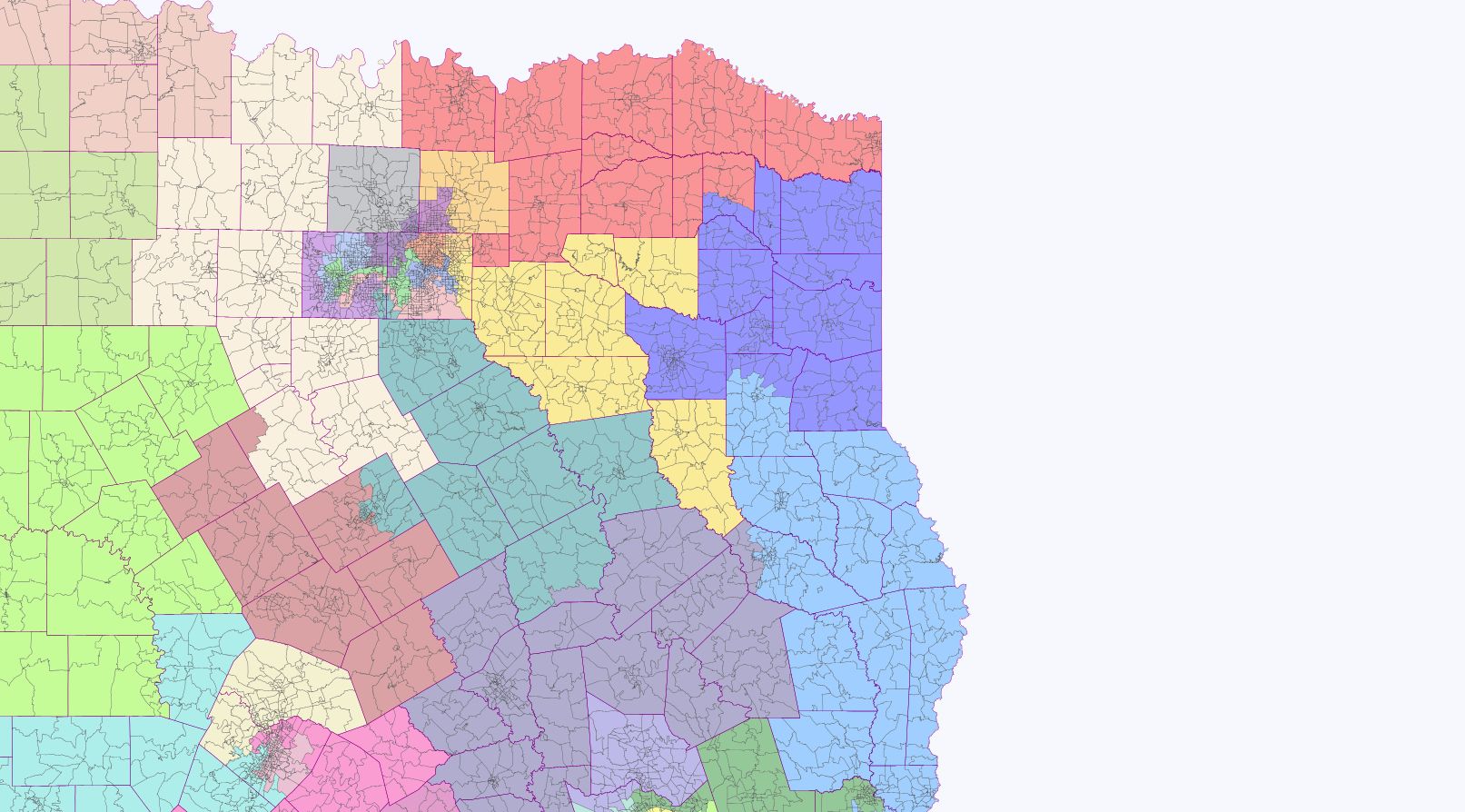
District 1 Gohmert (R) (dark blue)
Obama 30, McCain 69
Slight changes made.
District 4 (red) Hall (R)
Obama 29, McCain 70
Should be safe for the GOP when Hall retires or dies.
District 5 (yellow) (see writeup in Dallas-Fort Worth section)
District 6 (teal) (see writeup in Dallas-Fort Worth section) The only thing I’ll add here is that the 6th now cuts Waco in half with the new 40th, thus probably ensuring no return to Congress by Chet Edwards.
District 40 (burnt orange) NEW GOP SEAT
Obama 39, McCain 60
Probably a safe seat for the GOP, Obama percentage is as high as it is due to abnormally high turnout in 2008 for him in Bell County. Probably overstates Democratic strength a bit. If Edwards were to try to get back into Congress, it might be from this district, but I still think the deck is stacked against him.
District 37 (light blue) NEW GOP SEAT
Obama 32, McCain 67
East Texas gets a district of its own. While this district at one time may have elected a conservative Dixiecrat in the mold of Charlie Wilson, I don’t think it will now.
District 17 (dark purple) Flores (R)
Obama 33, McCain 66
Removes the possibility of Edwards trying to take his old seat back by removing Waco completely and recentering the district more to the left-over areas from drawing districts in East Texas and the Houston area.
Houston Area
This is one area where the VRA, once thought to be a major friend to the Democrats, actually surprised me in not being all that much of one (South/West Texas is the other). Back in 2004, the GOP actually sensibly left three Democrats alone here. A second Hispanic district is added and Lee gets a Black majority district instead of her current fusion minority-majority one. Even though two new GOP suburban seats are created, all GOP incumbents are given safe districts.

District 2 (forest green) Poe (R)
Obama 38, McCain 61
Shrinks a little bit from before but basically the same.
District 42 (neon green) NEW GOP SEAT
Obama 42, McCain 57
Was able to partition Olson’s district roughly in half into two successor districts, this is one of them. Would be the congressman who represents the space center in Houston I believe.
District 29 (greenish-gray district right next to it) Green (D) HISPANIC DISTRICT
H 63, W 22, B 12
Obama 63, McCain 36
Perhaps the end of Green and an Hispanic congress-member at last from this district? Cut in half from its current version to make another Hispanic district in the Houston area.
District 18 (yellow) Jackson-Lee (D) BLACK DISTRICT
B 56, H 24, W 15
Obama 85, McCain 15
Once you scrape off the Hispanic precincts and place them into a new Hispanic district, it is possible to create a Black-majority district in the Houston area, and something which the VRA would require. In actual reality, after 2010, the Houston area is going to look a lot like I have it now under a 35/36 seat map as under a 46 Wyoming Rule map.
District 9 (sky blue) Green (D) MINORITY-MAJORITY COALITION SEAT
B 38, H 33, W 16, A 11
Obama 79, McCain 21
Very similar to what currently exists. A very proactive Obama DOJ would perhaps require a black-majority district stretching all the way down to Galveston and over to Beaumont, but I don’t think the Texas GOP will concede such a district unless legally forced to. I know if I were a Texas Democrat, I would draw such a very district! In the latter scenario, this district would extend a bit further than now into Fort Bend (and scrape off a few more areas out of the 7th) and retain its mixed-race character.
District 41 (top lighter gray) NEW HISPANIC DISTRICT
H 58, W 30, B 9
Obama 58, McCain 41
Takes Hispanic areas currently in the 7th and 18th, and left-over areas from the 29th, and combines them into a district.
District 7 (lower slightly darker gray) Culberson (R)
Obama 41, McCain 58
Largely the same as before except with heavily-Democratic Hispanic precincts cut out.
District 38 (light green) NEW GOP DISTRICT
Obama 40, McCain 59
Should be fine for the GOP.
District 8 (purple) Brady (R)
Obama 23, McCain 76
All of Montgomery County and a bit of north Houston County to equalize its population. Very safe GOP.
In Fort Bend and south of Houston…
District 22 (brown) Olson (R)
Obama 42, McCain 58
Removed the Houston parts of the district into a new district as well as shaved off a few very blue precincts of Fort Bend into the 9th. Olson should be fine.
District 14 (ugly green) Paul (R)
Obama 33, McCain 66
The incongruity of a congressman who doesn’t believe in flood insurance representing several areas prone to hurricanes gets me. But then again, I understand very little that comes out of Texas!
Austin Area
With the smaller Wyoming-sized districts, it is prudent to pack Democrats of Travis County into one uber-Democratic district instead of trying to crack them as is currently the case. Indeed, I would not be surprised if the GOP did this anyways in the real world after 2012. Doggett isn’t going anywhere.

District 25 (mauve) Doggett (D) NEW MINORITY-MAJORITY DISTRICT
W 42, H 39, B 13, A 5
Obama 78, McCain 20
Packs Democrats and packs them some more into this one Austin-based seat.
District 10 (pink) McCaul (R)
Obama 43, McCain 55
Instead of going east in search of Republican votes to offset the still large numbers of Democrats leftover after drawing the 25th, this district now goes south to the exurbs of San Antonio. Still, McCaul should like this district.
District 31 (white-yellow) Carter (R)
Obama 43, McCain 55
All of Williamson County and then dips south into a bit of Travis County to help spread the remaining Democratic voters out safely among the 3 districts surrounding the 25th. If Williamson ever turns purple or blue, Carter may be in for some difficulty. If the GOP had a long-term version, they’d concede a 2nd Democratic seat in Travis. But I’m dealing with yahoos who think they can secede from the union for crisssakes!
District 45 (light blue) NEW GOP DISTRICT
Obama 42, McCain 56
This district completes the cracking of remaining Democratic voters out of Travis County by combining Democratic and lean-Democratic areas of Travis with uber-Republican areas north and northwest of San Antonio currently in Lamar Smith’s district.
San Antonio

Here the idea was to see whether I could create a VRA-compliant district that protects Conseco. A Democrat could still win the district back, but I think I have achieved this goal. Otherwise, Smith moves entirely into Bexar County.
District 21 (dark brown) Smith (R)
Obama 42, McCain 57
It is possible to draw an entire district in Bexar County that will continue electing Lamar Smith. Amazing!
District 20 (pink) Gonzolez (D)
H 71, W 19, B 7
Obama 68, McCain 31
Packs Democrats in so that Conseco can be given a fighting chance next door.
District 23 (light blue) Conseco (R)
H 56, W 37, B 3
Obama 50, McCain 49
I believe this just barely meets VRA muster in that 56% is likely just enough to ensure that a majority of adults are Hispanic. If not, the district can be tweaked a bit to ensure that it is. About the best that can legally be done for Conseco under the Wyoming Rule.
District 28 (light pink/purple) will be written about in the South Texas writeup.
South Texas
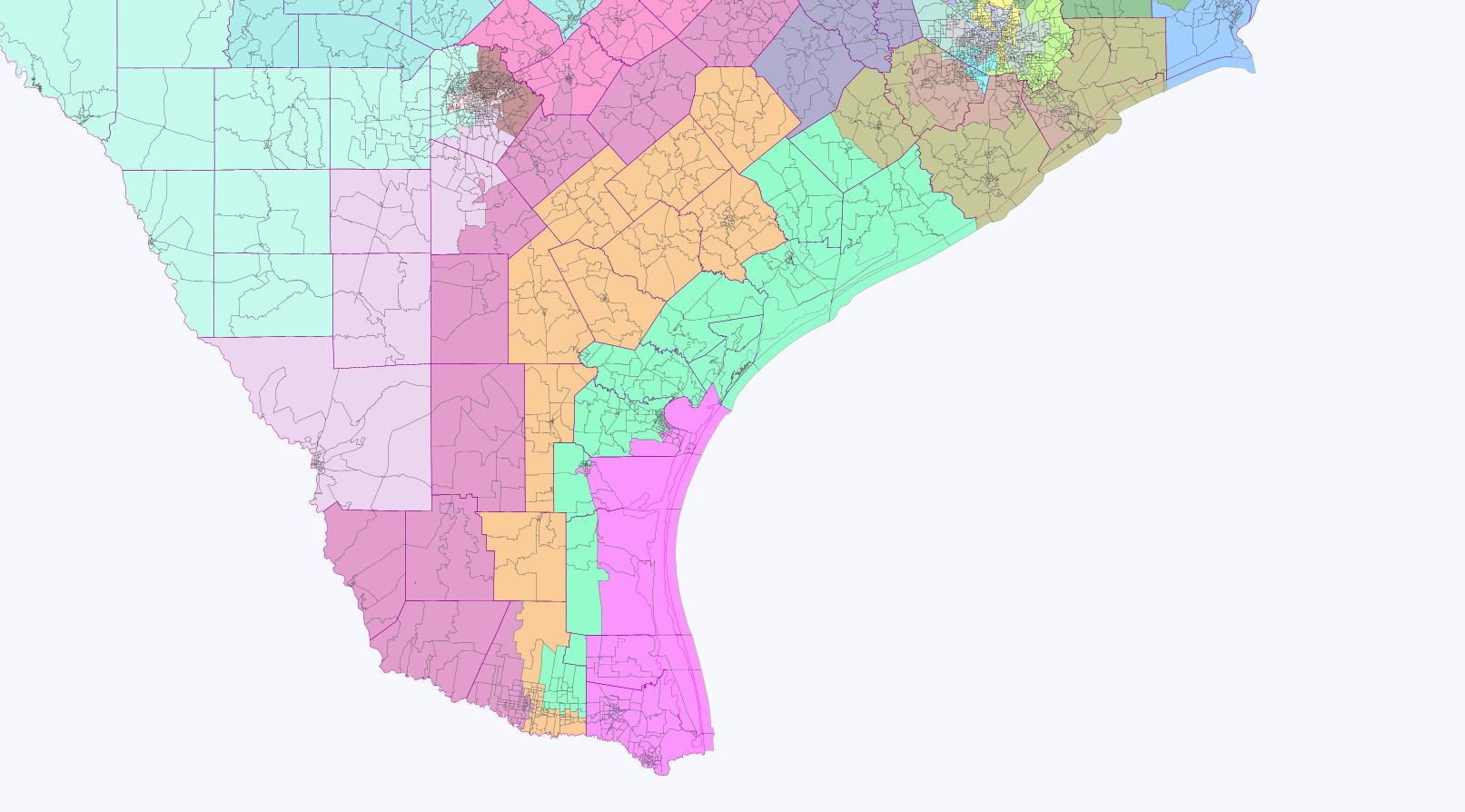
District 27 (light green) Farenthold (R)
H 63, W 31, B 4
Obama 50, McCain 50
In a shocker upset, a white Republican now represents a heavily Hispanic South Texas district in the Corpus Christi area. To give him a fighting chance, I carved out a new more Democratic district to its south. But even though this district is still well within VRA guidelines, McCain still narrowly carried it.
District 43 (pink) NEW HISPANIC SEAT
H 73, W 24
Obama 54, McCain 46
Still impressed by how good Republicans do down here. I guess South Texas Hispanics really don’t vote (because many of them aren’t legal citizens yet?). A Republican could easily win this D+1 seat in a wave election like we just had.
District 15 (orange) Hinojosa (D)
H 70, W 26
Obama 52, McCain 48
Legally you cannot pack South Texas too heavily with Hispanics; hence all the thin narrow districts. But that also means that none of these districts are all that Democratic in vote performance.
District 44 (dark red) NEW HISPANIC SEAT
H 76, W 21
Obama 56, McCain 43
South Texas’ other VRA mandated new Hispanic seat. Again note how it would only be lean-Democratic.
District 28 (lilac) Cuellar (D)
H 81, W 13
Obama 68, McCain 31
Okay, here we get a Democratic-performing district, probably because of the little bit of San Antonio in the district. Delicious irony from a GOP mapmakers perspective that one of former President Bush’s favorite Democrats gets the most Democratic district in South Texas!
Northwest Texas
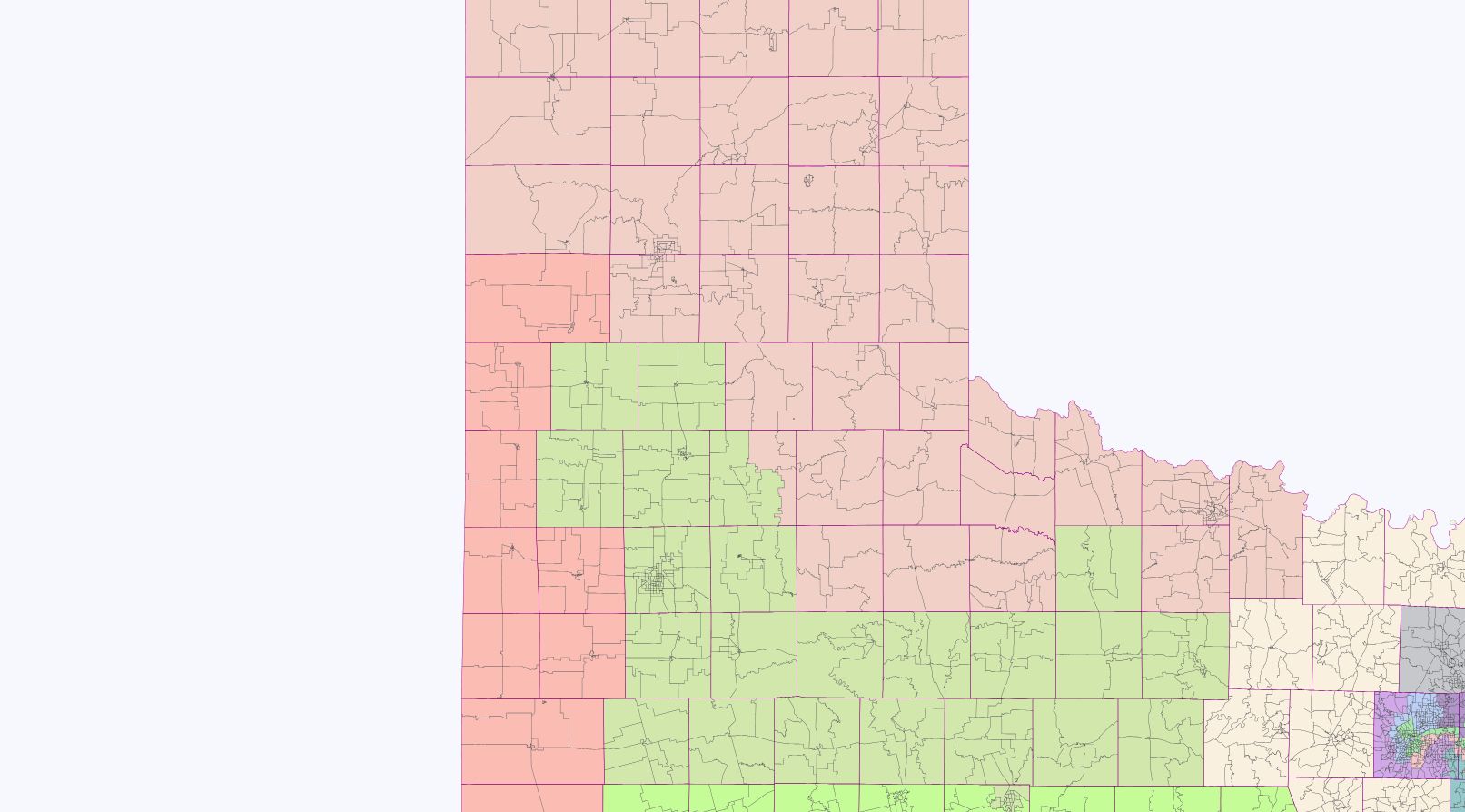
Here I decided to create a GOP voting VRA Hispanic district that climbs up the spine of the New Mexico border. After that, I decided to neaten up the district a bit; there’s no need for wild crazy lines when the days when the likes of Charlie Stenholm ever representing this region again in Congress are now gone and probably gone forever. This is the most Republican region of all of Texas (of America?) when you take the Hispanics out and give them their own district.
District 13 (beige) Thornberry (R)
Obama 22, McCain 77
District 19 (ugly green) Neugebauer (R)
Obama 29, McCain 70
District is still 27% Hispanic even with the Hispanic district next door explaining the slightly higher Obama performance. Still Democrats are an endangered species in West Texas.
Southwest Texas
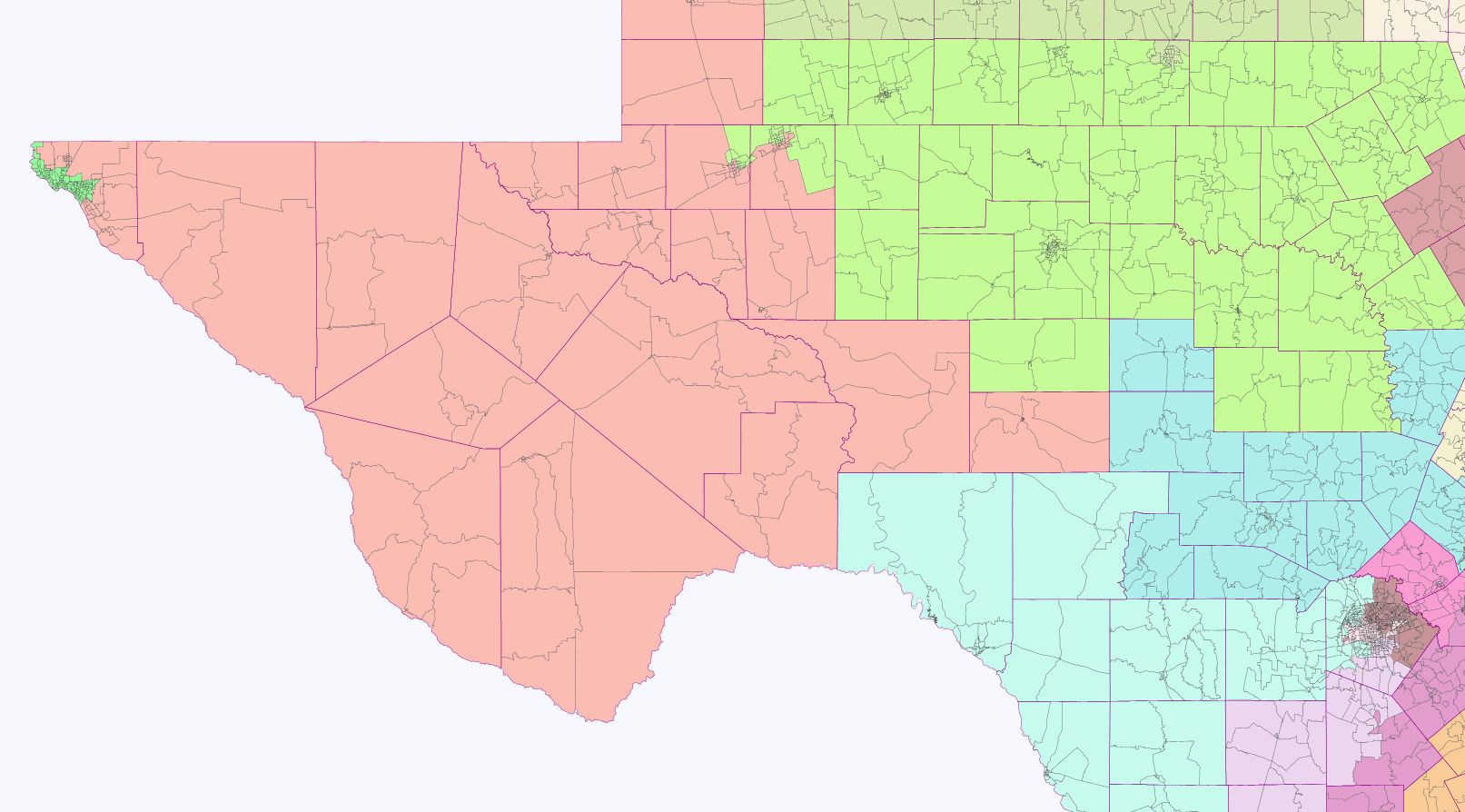
District 11 Conaway (R) (neon green)
Obama 21, McCain 78
District 46 (light red) NEW HISPANIC DISTRICT
H 61, W 32, B 5
Obama 44, McCain 55
This is one way the GOP can screw the Democrats using the VRA.
District 16 (green)
H 78, W 18, B 2
Obama 65, McCain 34
District shrinks due to Wyoming Rule, making it possible to draw a 2nd West Texas Hispanic seat.
So to recap, the map protects fully 21 of the current 23 Republicans in the delegation and gives the other 2 VRA districts they have a fighting chance of winning. Then of the 14 new seats, using the VRA to pack Democrats, the GOP is able under this map to carve out 9 new districts for themselves, yielding only 5 to Democrats under the VRA. Result, a delegation anywhere from 30-16 to 33-13 (given that Hinojosa now represents a R+1 district by PVI). Yuck, yuck, yuck!!!


